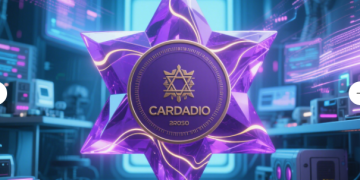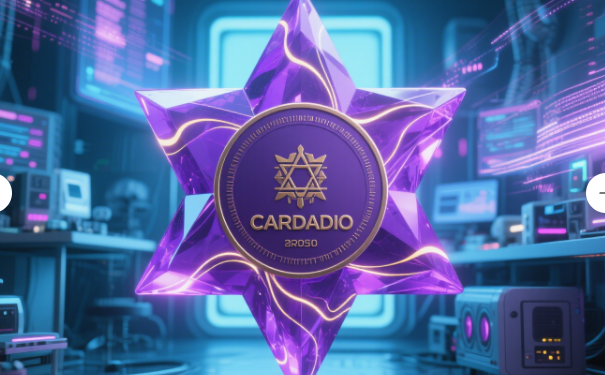Cardano’s native token, ADA, has been steadily gaining attention from developers, investors, and enterprises looking to harness a scalable and sustainable blockchain platform. But as market interest rises, users are increasingly searching for clarity on what makes Cardano Token distinct, how it fits into the evolving Web3 economy, and whether it’s truly living up to its promises of innovation and utility.
In this article, we explore the real-world value of ADA, dissect its technological strengths, assess its adoption trajectory with data-driven insights, and address key questions that potential investors and developers are asking today.
The Real Utility of the Cardano Token
Cardano’s ADA isn’t just a speculative asset — it’s the fuel that powers a proof-of-stake blockchain designed for global-scale decentralized applications. From transaction validation to on-chain governance, ADA is central to the Cardano ecosystem’s functionality.
Unlike Ethereum’s energy-intensive model, Cardano uses Ouroboros, a peer-reviewed proof-of-stake protocol. According to a paper published in IEEE Symposium on Security and Privacy, Ouroboros achieves provable security with minimal energy expenditure (Kiayias et al., 2020). This makes ADA particularly attractive in an era increasingly focused on sustainable finance.
ADA holders can delegate their tokens to stake pools and earn passive income while supporting network security — a dynamic that underpins Cardano’s decentralized ethos.
Cardano vs. the Market: Adoption Trends and Use Cases
As of Q1 2025, Cardano hosts over 1,500 decentralized applications (dApps), according to Messari’s 2025 State of Cardano report, with a notable rise in DeFi protocols and NFT marketplaces. Its EUTXO model — an extended version of Bitcoin’s UTXO system — allows for predictable transaction behavior, benefiting developers in contrast to Ethereum’s more volatile gas fees.
What’s driving adoption?
- Low fees and high throughput: With transaction costs under $0.20 and network throughput regularly exceeding 250 TPS (transactions per second), Cardano positions itself as a viable infrastructure layer for emerging economies and large-scale projects.
- Real-world deployments: Projects like Atala PRISM are leveraging Cardano to provide digital identity solutions in Ethiopia, impacting over 5 million students and teachers. This showcases ADA’s utility beyond crypto-native spaces.
Investor Challenges: Volatility and Perception
Despite its promise, ADA’s price has been volatile — a fact that frequently shows up in search trends like “Is Cardano a good investment 2025?” or “Why is ADA not rising?”
According to CoinGecko data (May 2025), ADA has fluctuated between $0.42 and $0.80 YTD. While it remains among the top 10 cryptocurrencies by market cap, its sluggish price action during broader market rallies has led to skepticism.
However, analysts argue this could represent undervaluation. “Cardano is arguably the most academically rigorous blockchain, but markets haven’t priced in its fundamentals yet,” says Dr. Julian Gutman, blockchain strategist at CryptoMacro Insights.

Developer Momentum and Smart Contract Growth
The smart contract functionality enabled by Plutus has grown steadily. As per Input Output Global’s developer stats, over 7 million native tokens and 160,000+ smart contracts have been deployed on Cardano by mid-2025.
Developer interest, measured by GitHub commits and repo activity, puts Cardano consistently in the top 3 blockchains globally. This trend supports the claim that Cardano is developer-friendly, especially after introducing Aiken and Marlowe — domain-specific languages for more accessible dApp building.
The Road Ahead: Governance, Interoperability, and Hydra Scaling
Cardano’s upcoming Voltaire era promises a fully decentralized governance structure where ADA holders will vote on proposals via the on-chain treasury. This model, detailed in the Project Catalyst governance documentation, could become a blueprint for DAO-based ecosystems.
Additionally, Hydra — Cardano’s layer-2 scaling solution — is already in early-stage deployment. According to IOHK benchmarks, a single Hydra head can process up to 1,000 TPS, allowing Cardano to scale horizontally across multiple chains.
The implications? If fully realized, ADA could support millions of users without congestion or fee spikes — a crucial feature for enterprise and cross-border applications.
What Users Really Want: Clarity, Stability, and Long-Term Vision
From retail investors seeking “Cardano price prediction 2030” to developers searching for “How to launch a token on Cardano”, the common pain point is clarity. ADA has a powerful foundation — but its communication gap and slow iterative rollout have led to user confusion and underutilization.
Solving this means:
- More accessible educational tools
- Transparent development roadmaps
- Enhanced marketing of real-world Cardano use cases
By addressing these, Cardano — and its token — could shift from a promising underdog to a leading protocol in the next crypto cycle.
In Summary, Cardano Token (ADA) combines academic rigor, sustainable architecture, and real-world utility. While it faces market skepticism due to its conservative rollout and modest price action, its core fundamentals position it as one of the most undervalued layer-1 assets in the current blockchain landscape.
As the ecosystem matures — powered by Hydra, Voltaire, and increasing dApp activity — ADA could become a backbone asset for the decentralized internet.
Stay updated with the evolving crypto landscape — only on Bitora.
Author: Dr. Alex Nomura
Dr. Nomura is a blockchain finance specialist with over a decade of experience in decentralized systems, tokenomics design, and digital asset governance. He holds a PhD in Cryptoeconomics and has contributed to multiple peer-reviewed journals and conferences on distributed ledger technologies.



























